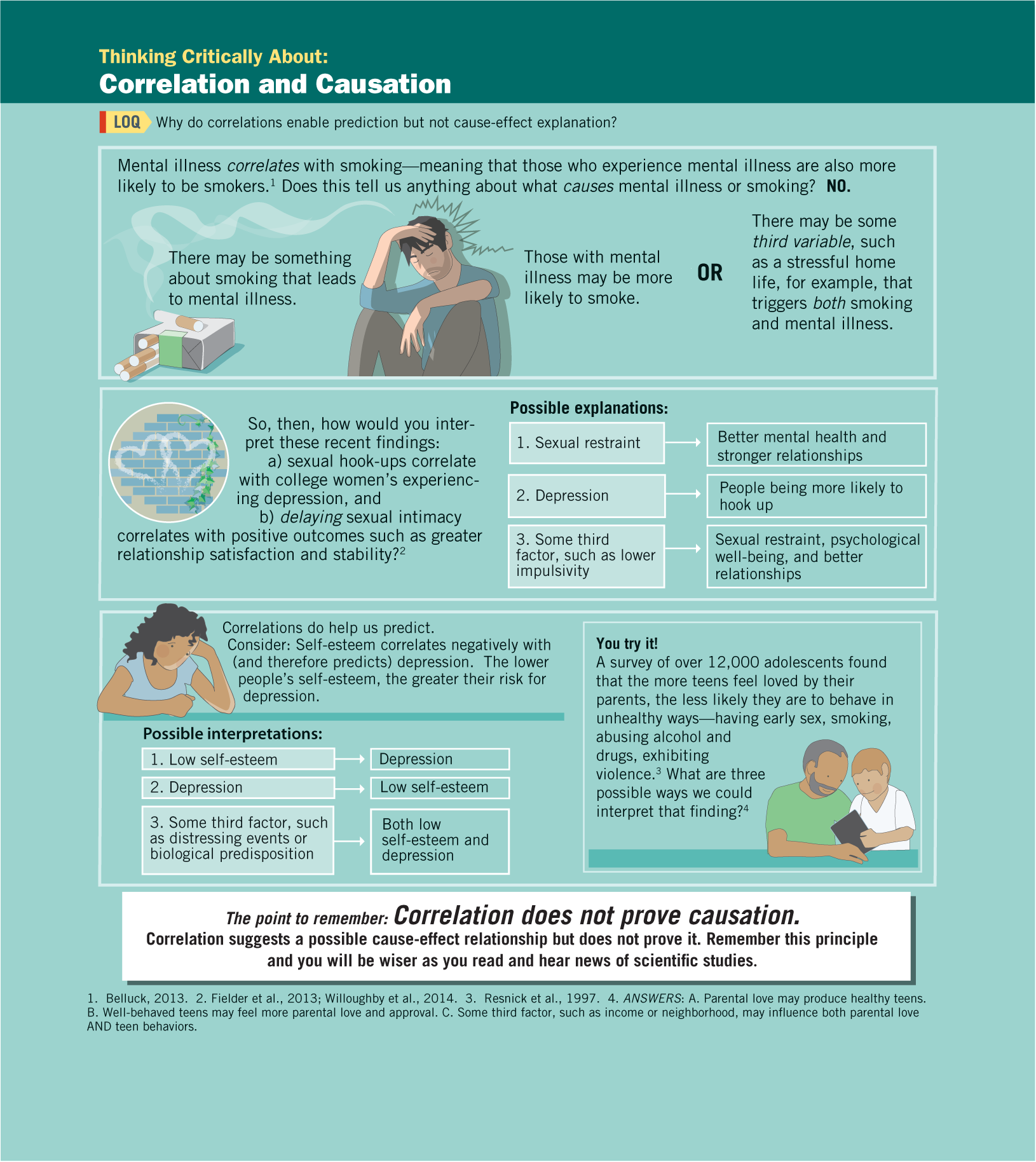Chapter 2. Correlation and Causation
Infographic
Infographic Activity
by David Myers and Nathan DeWall
true
true
Thinking Critically About: Correlation and Causation
Correlational research reveals the extent to which two things relate, but it cannot explain the direction of that relationship. (This infographic is from Psychology in Everyday Life, 5th Edition, Chapter 1.)
Quiz
Quiz
Question 2.1
d3j/9IKdSam6ZL4IT2HpQBZlCc3O4v4lwp5UEesmLSElPjlzulxoLSiGmXiMCQOVMM5aZx/WBdxPnZ3QeJ/6uqFMsDG8UrfNpsGKmG+wPsU=Correlational research indicates how related one thing (such as self-esteem) is to another (such as depression). If the two variables are associated (correlated), then knowing the level of either one will help us predict the other.
Question 2.2
qO4eYOSRMxglIBDh/+upXMMvXeRUFK+zbw35WKtAcHGshqZlyKRCl2u2XiGAbsuFAhwfJX76QfMsgyGt8fxP/s3gdooqDmaRXaENXeR+miwYssBD8c85YLqu42FJ3BeIA0t9JPYpUVEsK5yekt0U1PlO1I+q1gqu6JGOAXPzbcE=The only information provided by correlational research is whether two variables are related—so whether one variable predicts the other. But this type of research tells us nothing about the direction of that relationship—nothing about why the variables are related or what is causing the relationship. For example, correlational research may tell us that happy parents tend to have happy children, but it does not tell us why. It could be because (1) having happy parents makes for happy children, (2) happy children make for happy parents, or (3) parents and their children share happiness-disposing genes.
